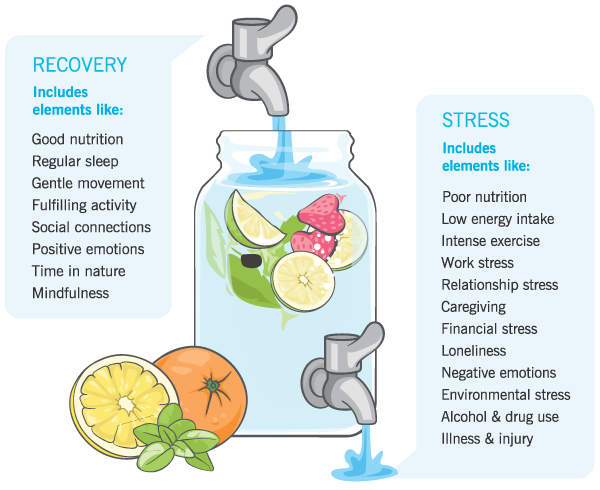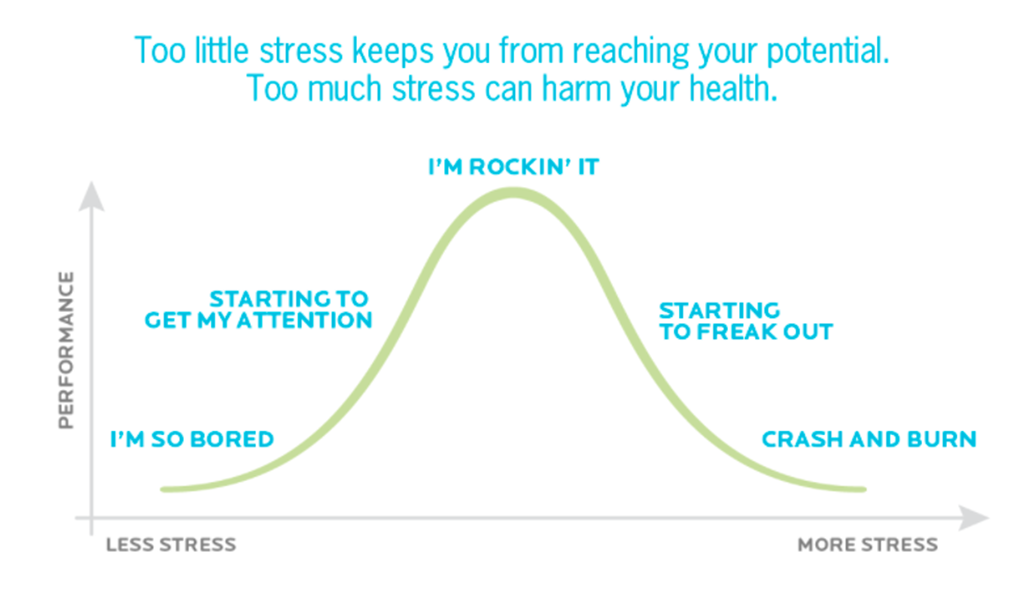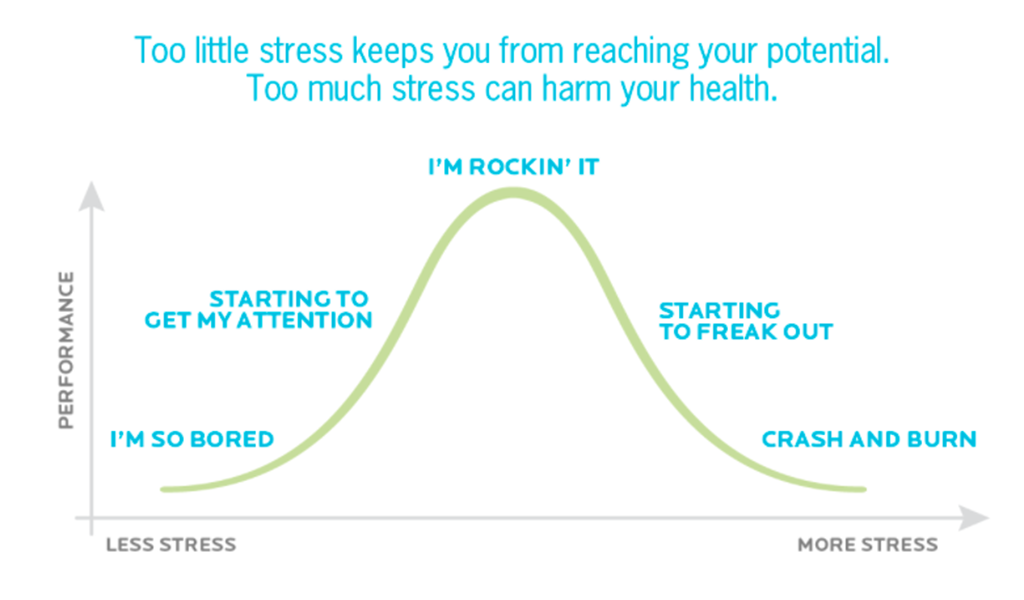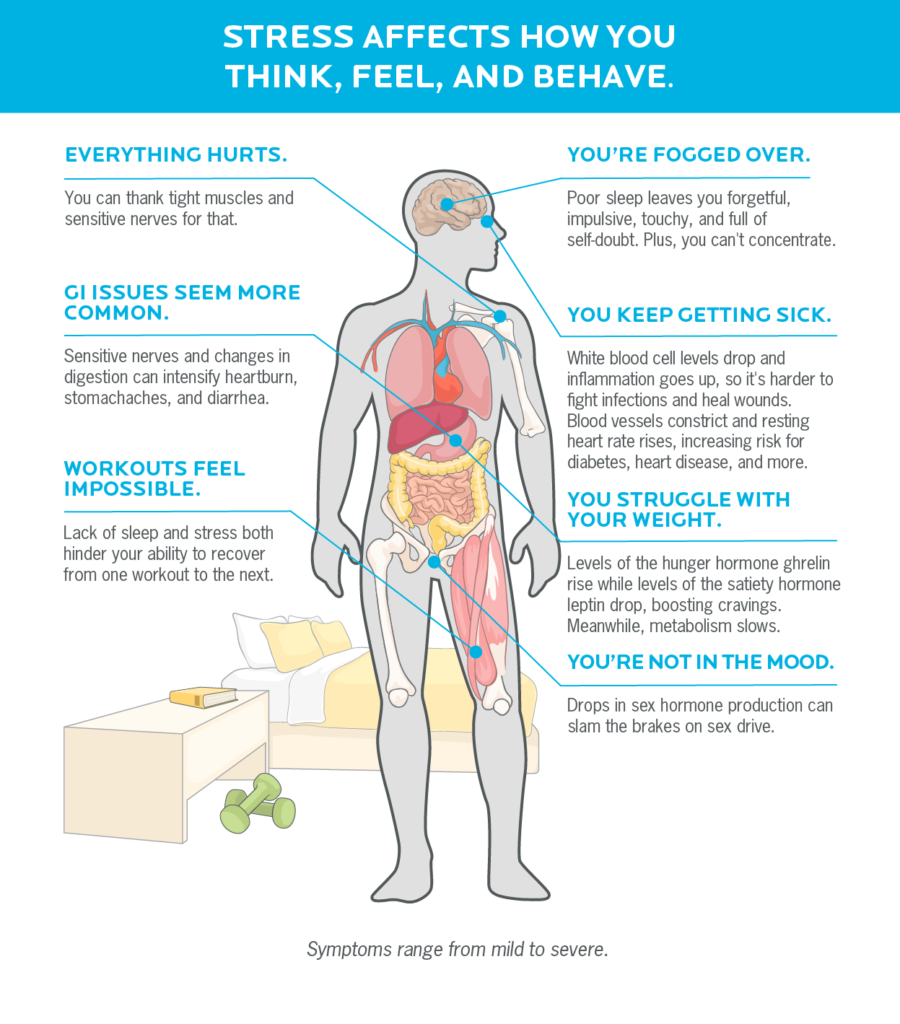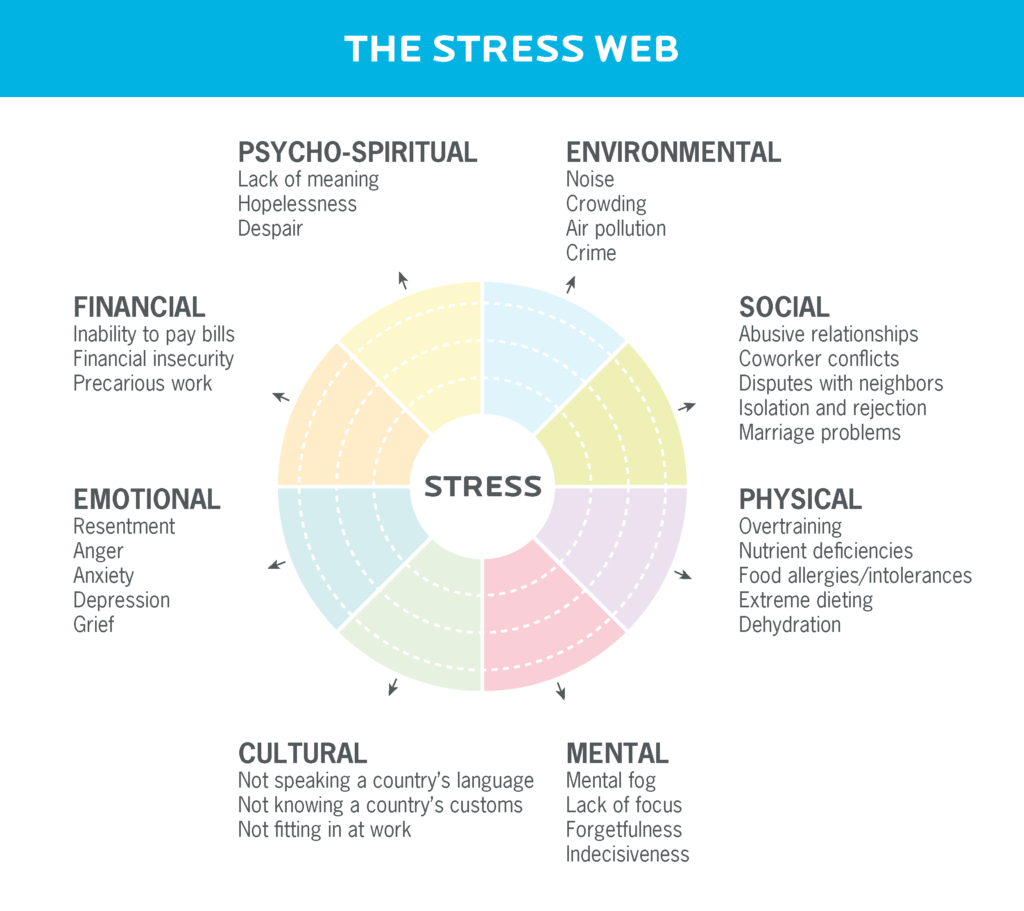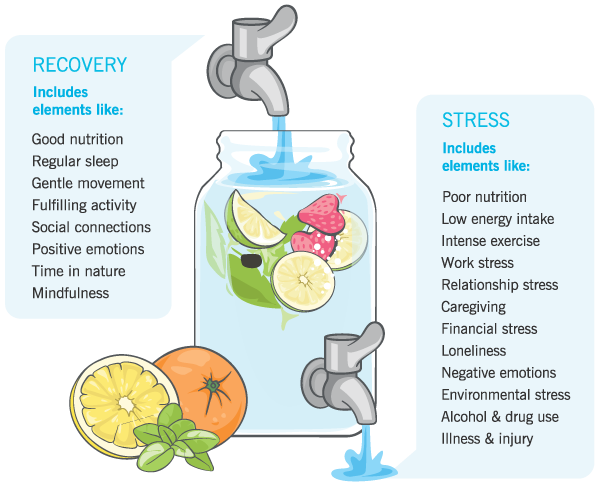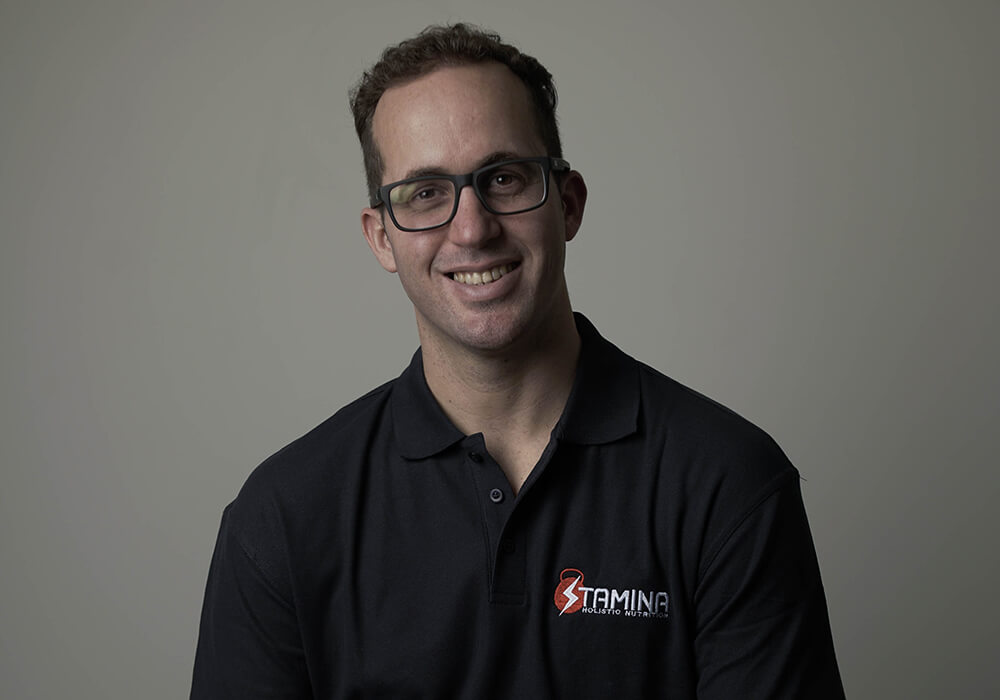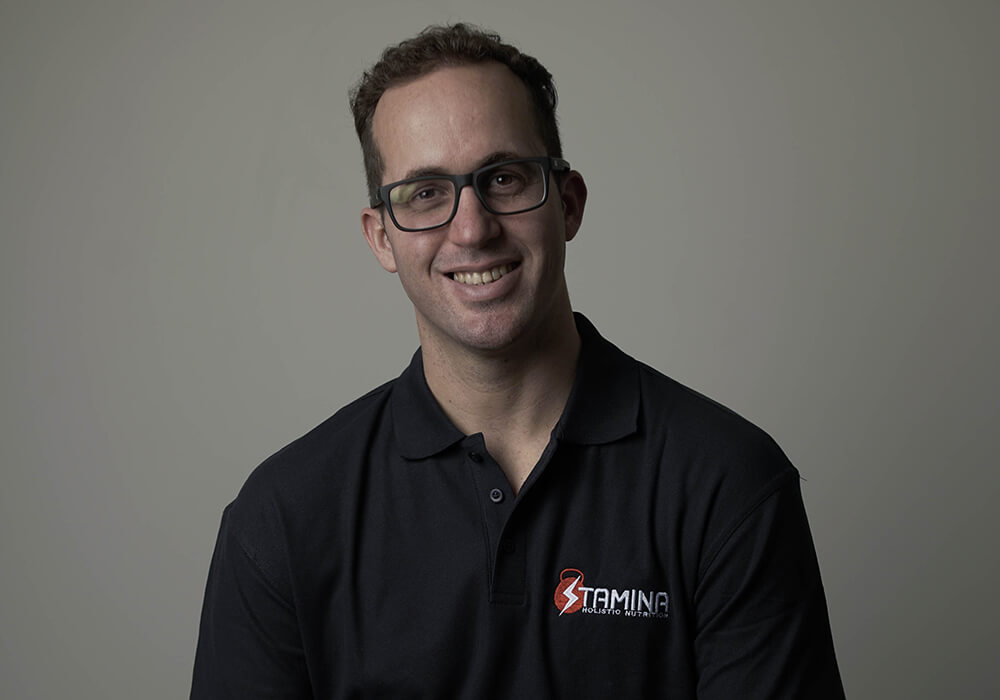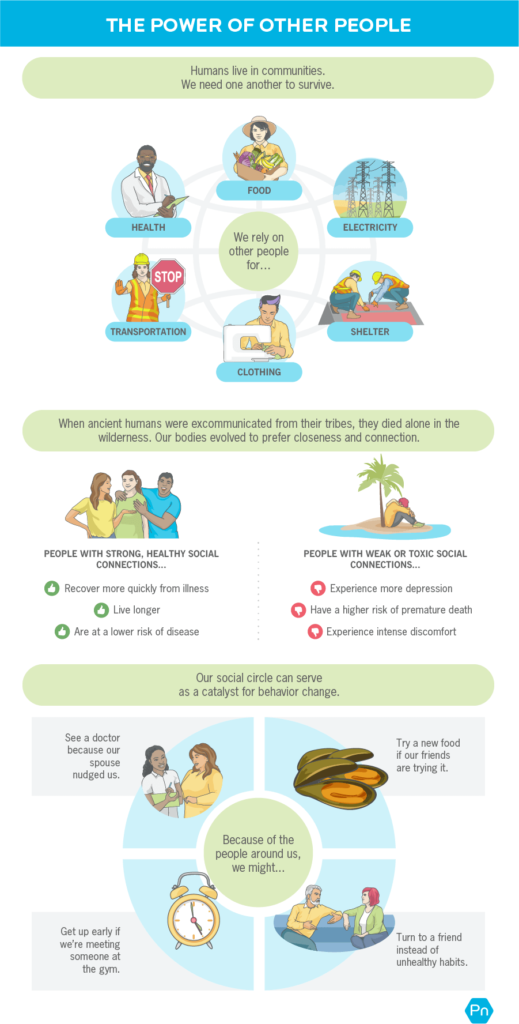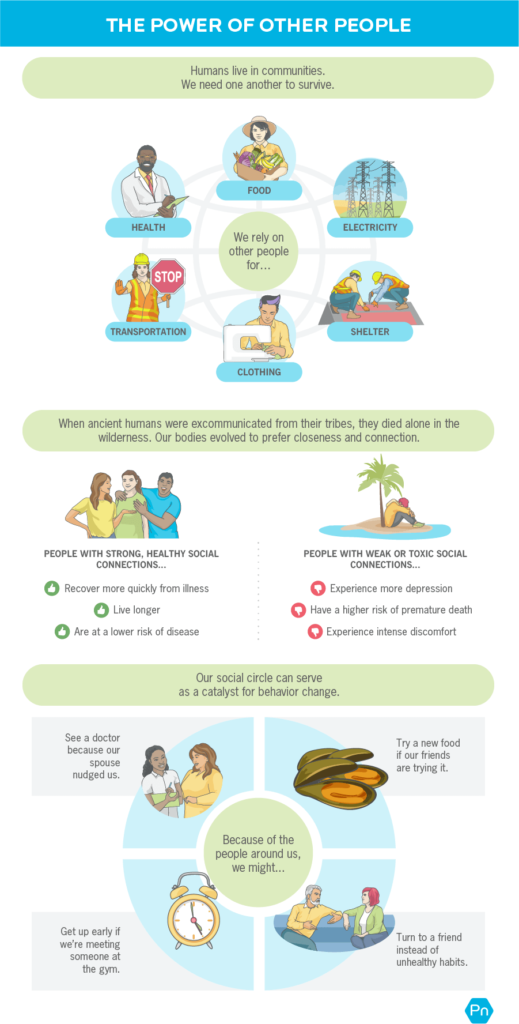The internet is full of energy hacks.
Try fasting! Put butter in your coffee! Take this supplement!
What if you’ve tried all that—and your doctor has also declared you the healthiest and fittest of specimens?
Yet your energy and focus still aren’t where you want them.
Is it time to face the reality that you’ll never feel as spunky or get as much done as you want?
Nope, not quite.
There’s a good chance you haven’t yet explored all of your options. In this article, we’ll share three unexpected solutions. Experiment with one, two, or all three—and get ready to feel a whole lot better.
++++
#1: Optimize your sleep environment.
Our sleep habits are tied to our physical environment.
For instance, one PN client couldn’t figure out why she avoided going to bed every single night.
It turned out, her bedroom was a bit of a dumping ground for junk, which reminded her of all the work she had yet to do. More stress meant less sleep.
The thing is…
A relaxing environment is essential for a good night’s rest.
People sleep better when their bedroom is optimized for comfort, light, and noise and temperature.
The experiment: Redesign your sleep area.
Think of this experiment in two levels.
Level 1: Declutter.
Marie Kondo, the famous tidying consultant, author, and Netflix star, based her “KonMari” cleaning method on this idea:
You can transform your home into a space of serenity and inspiration just by decluttering.
In addition to helping you sleep, a soothing, restful environment can lead to mental clarity. (Hello, energy you’ve been missing!)
Importantly, your bedroom doesn’t have to reach Kondo-perfection, and you don’t have to do all the cleaning at once.
(If you’re completely happy sleeping in a pile of laundry or with your pet tarantula… then enjoy.)
That client we mentioned earlier, for example, committed to tackling one tiny pile of stuff every day.
Within a few weeks, her bedroom became a sanctuary, rather than a dumpster.
And guess what? She couldn’t wait to crawl into bed every night, relax with a cup of tea, read a good book, and go sleepytime.
Which leads us to…
Level 2: Redecorate your sleep environment.
Once you’ve decluttered, consider setting up your bedroom for optimal sleep. You might want to adjust:
➤ Light levels and quality: Dimmed or red/orange spectrum light (as opposed to bright or blue/green-spectrum light) can help promote sleep and relaxation.
For some people, a night light adds a feeling of safety, making it easier to sleep.
➤ Environmental temperature: In general, body temperature drops during sleep, so having a cool environment is considered sleep-promoting. However, some folks may find warmth more relaxing, and prefer a heated blanket or warm bath before bed. Again, go with what works for you (or your client).
➤ Noise (and silence) levels: Some folks need silence to sleep best. Others find background sounds—like music, storm or songbird playlists, or white noise—more relaxing.
➤ Tactile stimulation: How do you feel about flannel pajamas? A fluffy cat or dog? A body pillow or stuffed animal? A weighted blanket?
Don’t forget: These are all experiments.
Not everyone is the same. Try stuff, and see what works.
#2. Help yourself feel socially safe.
Humans need supportive social connections.
And yet, other people often cause the most pain.
In other words, relationships can be a source of energy… or energy drain.
One way to gauge whether a relationship is giving or taking your energy: attachment.
Attachment is the ability to form strong, secure, stable bonds with others.
When you’re securely attached, you feel free to be yourself and express your needs. You trust the other person to have your back and be an ally and advocate. You also gain energy from engaging and connecting.
When you’re not securely attached, you may feel as if you can’t honestly share your true thoughts or feelings. And that can be exhausting.
Your energy gets drained by the work of hiding yourself, attempting to manage others’ feelings, and/or trying to protect yourself from their toxicity.
The experiment: Do an attachment inventory.
Make a list of the people in your life.
Include animals (such as your dog, cat, or horse) as well as yourself.
For each relationship, consider how strong, safe, secure, or supportive the attachment or connection is.
Strong: The bond is robust and nearly unbreakable. This relationship has “life” and vitality. You’re connected.Safe: You feel validated, seen, and accepted. You can be messy, real, and vulnerable, and won’t be criticized, judged, or rejected.Secure: You trust this relationship. It’ll be there for you no matter what.Supportive: The other person genuinely cares about your goals and values, and wants to help you succeed.
Jot down some notes.
Whatever you notice, don’t judge it. Just observe. Then, record your answers to these questions:
Who gives you energy when you interact with them? Who drains it?Which relationships feel the most connected and close? What gives you that feeling?Which relationships feel more complicatedrisky, stale, or insecure? What gives you that feeling?Who helps you move towards being the person you want to be? How exactly do they do that?
Once you have your answers, consider which relationships might be stealing some of your energy. Is there anything you can do to strengthen them? Or, is it time to let go of some?
Conversely, who gives you energy, and how can you spend more quality time really engaging?
Maybe, instead of liking his photo on social media, you call the uncle who always makes you laugh. Or rather than half heartedly throwing the ball to your dog while you’re distracted on your tablet, you take Fluffy on a nature walk.
The answers won’t necessarily involve a quick fix. (You may not want to cut your sister loose even though your relationship is freaking draining.)
But bringing awareness to how relationships either energize or drain you can be a key step.
#3: Give back… wisely
Giving some of your time to others can help you feel like you have more time overall, research shows.1
But there’s a catch. You can also deplete yourself, especially if you give for the wrong reasons, such as, say, to please certain people.
To gain energy rather than drain it, carefully choose the service and care you offer, and care for yourself, too. Look for options that bring you and others joy and comfort, but don’t run you down.
When you prioritize what you truly value, and select your caring and service thoughtfully (rather than it being just one more obligation), then giving to others feels great—rather than just another draining chore that pushes you further down your own to-do list.
The experiment: Create your own personal mission statement.
First, consider these questions.
Are you someone who enjoys thinking about Big QuestionsAre you someone who prefers “just the facts,” and doesn’t have a lot of time for that nonsense?Do your cultural traditions involve existential, philosophical, and/or spiritual exploration? If so, how and what?Have you ever had a profound, life-changing, “bigger-than-me” experience? A sense of wonder and awe? Or something that changed your sense of “self”? If so, what?Flip side: Have you ever had a tiny, single-moment experience that made a big difference? (Think: a kind word when you were down, a spontaneous gesture, sharing a genuine emotion with someone, a joke that caught you off-guard and made you laugh in spite of yourself?)
Take this exercise one step further by writing a personal mission statement. Create a list of three existential commandments (or, at least, personal guardrails) that guide your life.
Dig deep and reflect on the following questions:
What are the core values and beliefs that drive what you do?How do you give back or support others through your daily life, profession, or volunteer work—or simply by being who you are?What aspects of life are most important to you? What do you want to experience while you are here?What kind of a legacy do you want to leave behind?Okay now: What’s the smallest possible version (think: 5-minute action or less) of all of the above?
With your personal mission statement in hand, brainstorm ways you might be able to give back without totally overwhelming yourself, such as trying to brighten someone’s day and make them smile, bringing a coffee to a coworker, or holding the door open for someone.
Note: You’ll probably find that you’re already giving back in some ways.
That’s awesome. Recognize that, and remember that it’s a pretty great reason to get out of bed every day every day.
Here’s an example. Let’s say you’re a health coach who’s passionate about helping others live their healthiest lives.
You probably already give back by working with clients. But you might also:
Volunteer at a food bank, refugee welcome center, or soup kitchen to help everyone eat healthier—or even just get a square meal.Start, or contribute to, a community garden, cooking program, or walking group to boost neighborhood health.Organize a pick-up sports league (like an “everyone-welcome” soccer game) with the neighborhood kids to help fight sedentary habits.Offer a free coaching spot for someone in need.
Energy can hide in surprising places.
The experiments in this story? They’re just the beginning. Not every solution for better focus and energy will work for you or anyone else. Chances are, however, that, if you keep experimenting, you’ll eventually find the focus, spunk, and motivation you want.
jQuery(document).ready(function(){
jQuery(“#references_link”).click(function(){
jQuery(“#references_holder”).show();
jQuery(“#references_link”).parent().hide();>
References
Click here to view the information sources referenced in this article.
1. Mogilner C, Chance Z, Norton MI. Giving time gives you time. Psychol Sci. 2012 Oct 1;23(10):1233–8.
If you’re a health and fitness coach…
Learning how to help clients manage stress, build resilience, and optimize sleep and recovery can be deeply transformative—for both of you.
It helps clients get “unstuck” and makes everything else easier—whether they want to eat better, move more, lose weight, or reclaim their health.
And for coaches: It gives you a rarified skill that will set you apart as an elite change maker.
The brand-new PN Level 1 Sleep, Stress Management, and Recovery Coaching Certification will show you how.
Want to know more?
The post Warning: People Who Try These Experiments Tend to Get a Lot More Done appeared first on Precision Nutrition.
Did you miss our previous article…
https://trailsmart.org/?p=204



